Bone meal is prepared from the defatted, dried animal bones obtained from the slaughterhouse, and these bones are ground to a fine powder. It is a powder made from ground-up animal bones, normally beef bones, but they can be any animal bones commonly slaughtered. They are processed under steam to remove fats and impurities and ground into a coarse form, used as an organic fertilizer for plants.

It is a mineral supplement and is high in calcium and phosphorus. There are many better forms of calcium supplements on the market. However, bone meal is a supplement for certain plants, like flowering plants, and root crops like carrots and Onion. Organic gardeners often use bone meal fertilizer to add phosphorus to garden soil, but many people are unfamiliar with this organic soil amendment.
Bone meal is not only organic fertilizer but also chock full of nutrients. It primarily supplies phosphorus, one of the three primary plant nutrients, and calcium and Nitrogen. Bone meal enriches phosphorous in soil for optimal spring gardening results. Phosphorous plays an important key role in developing strong root systems and adding the bone meal to soil releases this element into the soil for up to four months.
Slow, steady delivery of nutrients helps to grow plenty of big, blooming flowers, fruits, and vegetables. I think the best thing when you use bone meal fertilizer is that it is environmentally friendly and organic. Using it in organic gardening is simple and very safe.
How to apply bone meal on plants in your garden
Bone meal – not suitable for all soil pH levels
As the bone meal is water-insoluble, it must be broken down before it can be absorbed by plants, either by soil acidity or microbial activity. Only acidic soils, pH 7.0 or higher, can break it down, releasing its nutrients over one to four months. Plants need an acidic soil type with a pH of 7 or lower to absorb phosphorus from organic fertilizers like bone meal. You won’t see any real results from bone meal fertilizer if your soil is inclined towards alkalinity. Make sure to know the soil pH before amending it.
How to make bone meal fertilizer
There is a possibility to buy high-quality bone meal available in the market. However, many cultivators find value in making their own. Homemade bone meal puts one more part of the livestock to use after eating them and potentially uses their pelts or hide. Likewise, making homemade bone meal gives complete control over the origins of every ingredient, so there is no need to worry about what is winding up in the soil.
In case you missed it: Maryland Vegetable Planting Calendar (MD): Month Wise Garden Guide for Fall, Winter, Spring, Summer, Zone 6, Zone 6, Zone 7, and Zone 8
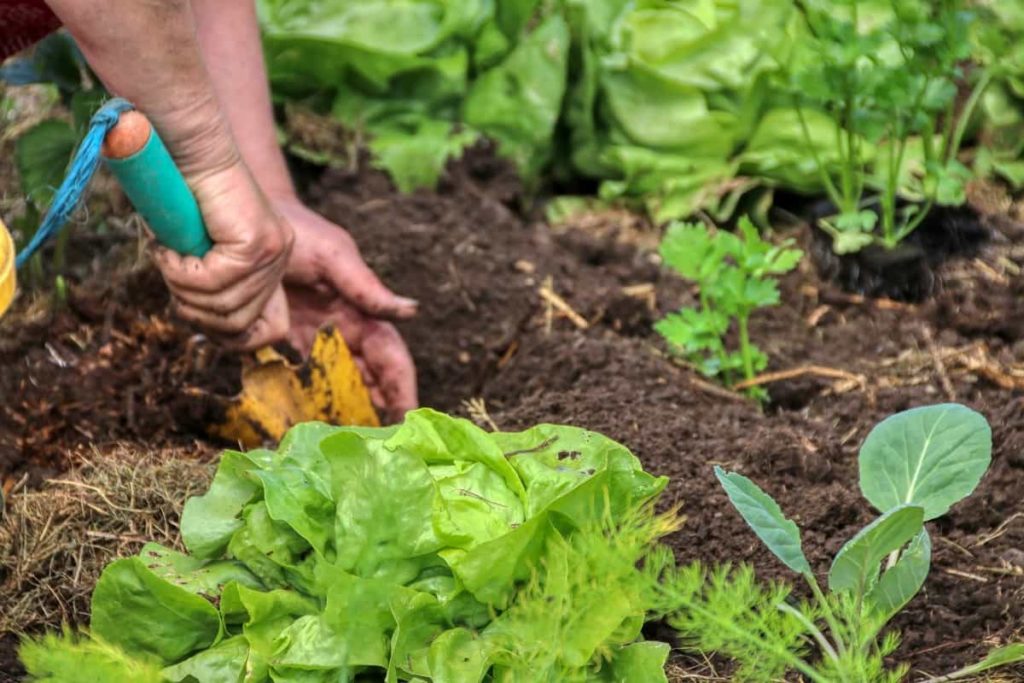
1. The first step in making a bone meal is choosing bone type. Beef bones are the best choice because of their density. However, turkey, chicken, and pork bones will also be used as raw bone meal-making sources. Collect the bones from slaughterhouses and store them. It is best to start stockpiling bones in the freezer to have a quick supply when it is time to make the bone meal.
2. Once sufficient bones are collected, the next step is to soften them through boiling. Use electrically operated pressure cookers like the instant pot as the best option to make a homemade bone meal. These boiling bones process in electric cookers creates the animal bones ultra-soften that can be smushed between fingers. This softening is excellent news for the blades of the food processor. You have to follow a recipe for instant pot bone broth to get double the benefit from the bones.
3. A container full of water can also be boiled along with bones with a splash of vinegar and one or two spoons of salt to soften bones. Cook on low for 12 hours with a lid on it. Pour off the broth, and repeat for a second batch.
4. Once the broth is finished and the bones are softened, drain them through a filter and add them to a processor bowl.
5. Pulse it until the bones are broken into roughly equal-sized pieces. Try to break them into small pieces because they will dry out faster.
6. After that, thinly spread the mixture onto the sheets of a dehydrator. It is suggested to put it on drying trays designed for making fruit rolls so that the bone meal does not fall through the cracks. Dehydrate these broken bone pieces at approximately 160 degrees until the bones are thoroughly dried. This process will take several hours.
7. Test their progress of dehydration by crumbling a bit between the fingers. If it leaves white dust behind, it signifies it is done.
8. The bone meal should easily crumble into a fine powder at this state.
9. Take them out from the dehydrator and re-blend them with the food processor to further smooth the texture.
10. Use immediately in the fields or store it in a cool, dry place in air-tight sealed containers. The bone meal should last long until you are ready to use it.
Use bone meal for better garden soil
knowing how to use bone meal in the garden is a smart way to improve soil quality. So as long as the time to decide whether your growing practices can benefit from it. Adding some bone meal to the soil in the spring will give the plants bigger blooms and strong root systems throughout the growing season. You can make the bone meal as described above, but if you can rather purchase a high-quality one, then this organic traditional bone meal is a good choice.
How to use bone meal powder in the garden
Bone meal fertilizer is a great option if you employ organic gardening methods. On top of being bone meal is completely free of chemicals, the natural decomposition process feeds the microbes in the soil. It has micronutrients like magnesium, zinc, and iron that boost plant health, benefit microbial growth and improve the soil’s overall structure and quality. Good soil quality leads to improving the quality of your plants and produce. And also, like commercial fertilizers on the market, it does not burn plants if too much is accidentally applied.
In case you missed it: Top 25 Amazing Annual Shade Plants: How to Grow and Care in Your Garden
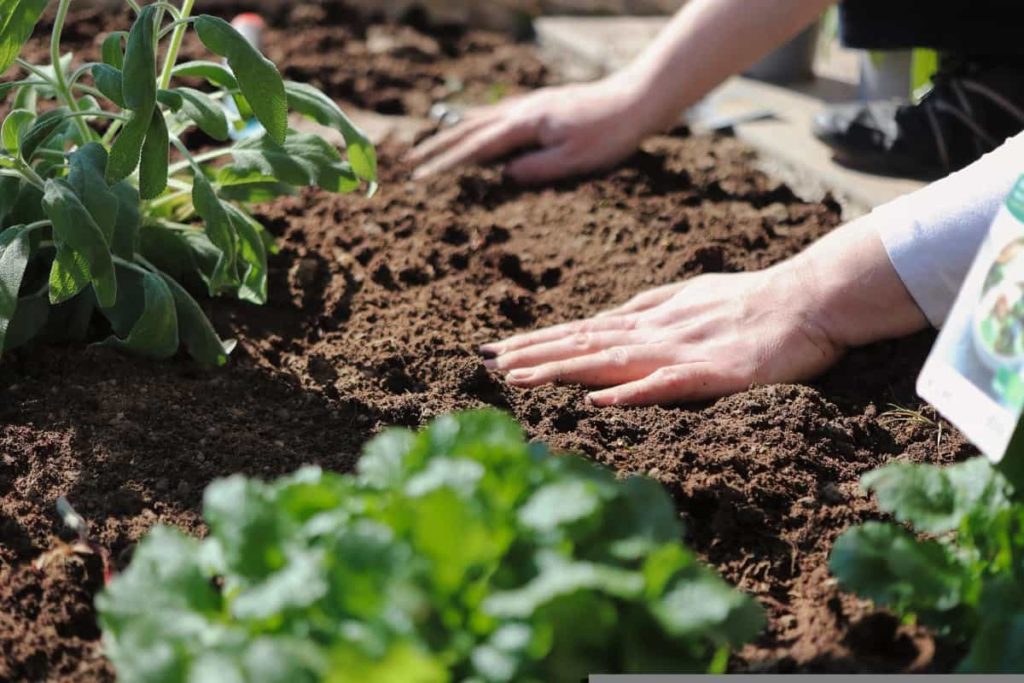
Bone meal fertilizer may not be suitable for every garden soil type. Ensure to perform a soil test before choosing a fertilizer for the garden. Before applying bone meal fertilizer to the garden, it is important to perform a soil test. This soil testing can help determine whether it is the right choice for the soil. Applying bone meal is simple and does not require to be repeated often. Regarding how much bone meal fertilizer to use, the general rule of thumb is 3 cups for every 100 square feet of soil.
Regarding gardening, the plants are only as healthy as the ground they are growing. The right soil amendments enrich the soil quality and differentiate between stunted plants and a stellar harvest. One common natural nutrient source is bone meal fertilizer. The soil amendment is one of the secrets to growing bigger flowers and better vegetables. Bone meal fertilizer can seem intimidating for garden beginners, but if you know its strengths, bone meal fertilizer may transform the growing season. Let us explore how to use bone meal fertilizer in home gardens
During soil preparation
Dispel the bone meal fertilizer over the soil surface, add it to planting compost, and use both for better results. Make sure it is mixed well and should be spread all over the area in the garden evenly.
In the growing season
If you plan to add the bone meal throughout the growing season of plants in your garden, sprinkle it evenly around the established part of the soil and gently fork it into the surface. Take some precautions while feeding bone meal to the soil, as there is a chance of disturbing the plant roots as you do so. After scattering the bone meal, water the plants thoroughly.
Plants in containers
For plants established in containers, apply the bone meal fertilizer at the start of the season and then one or two times throughout the growing season to help strengthen plants and for better growth. Again, sprinkle around the plants, being careful of roots, then water sufficiently and do not overwater them
Vegetable plots
If you use a bone meal for the vegetable garden plot, add fertilizer and fork it into the soil before planting any seeds. Mix well with the compost and then scatter evenly over the soil surface in the planned vegetable garden area.
New plants:
Once you have dug a planting hole, add a small amount of bone meal into the plant hole. Also, you can add it to the compost and soil used as the planting mixture. Water the plants thoroughly for better absorption of bone meal.
When blending the bone meal into the soil, ensure to turn the soil well and evenly mix it into the ground. There should be no clumps or deposits of the fertilizer left unmixed. This thorough mixing can help distribute it throughout the soil and make it less likely that animals will consume it. The bone meal will take about four months to decompose in the soil, so do not reapply within this period.
In case you missed it: How to Plant and Care for Petunias: A Step-By-Step Growing Guide for Beginners
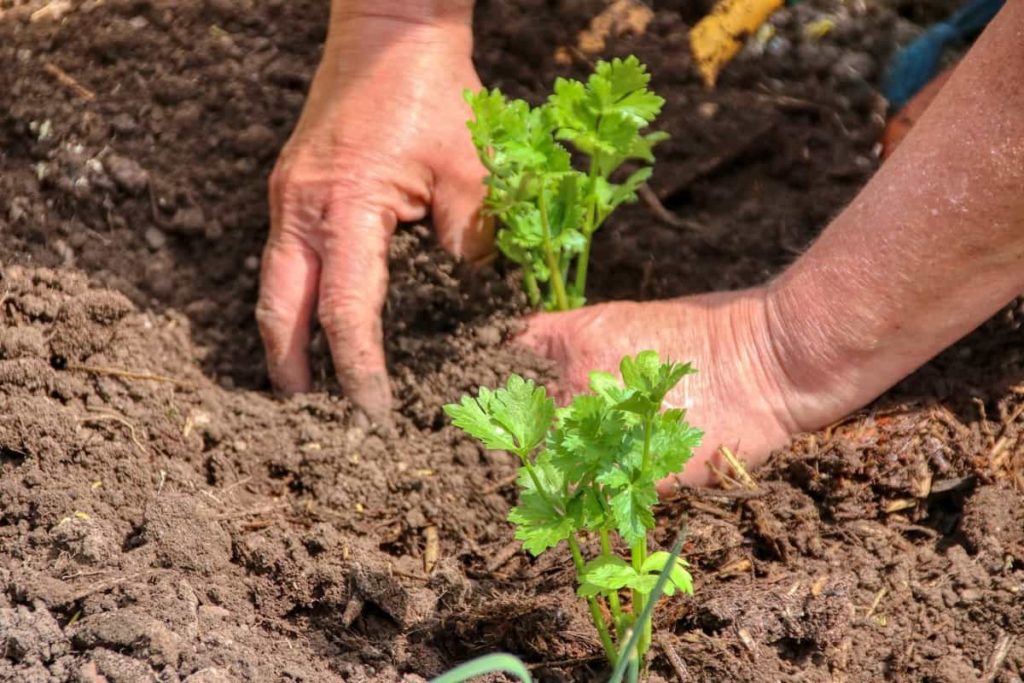
Use fish bone meal instead of traditional animal bone meal
If you are uncomfortable with the animal-derived bone meal, a fish-derived bone meal is a reliable alternative. This bone meal also offers practically identical benefits to traditional bone meals. It decays faster than bovine-derived bone meals. However, not all gardeners will tolerate the unsurprisingly fishy smell of this type of fertilizer.
Apply liquid bone meal
A bone meal in liquid form is a processed alternative to traditional granules and powders. Many gardeners believe liquid bone meal to be more effective at breaking down and releasing nutrients than solid bone meal.
To promote a healthy root system, shoot, and fruit growth, use liquid bone meal throughout the growing season. The liquid bone meal should be mixed with the water required. You can disperse it in your garden with a watering can or hose attachment. Depending on the manufacturer’s recommendations, this can be repeated daily or weekly.
Bone meal fertilizer benefits
Rich in Calcium
It is one of the essential nutrients for building strong bones and is also beneficial for plants. This mineral is abundant in bone meal fertilizer. You can use it to keep your plants’ cell walls strong and healthy and promote sturdy growth.
Rich in Phosphorus
Bone meal fertilizer contains phosphorus as well. This mineral plays a large role in photosynthesis, the production of roots, flowers, and seeds, the transfer of energy within the plant, and other vital functions. Some of its benefits are boosting pest and disease resistance and increasing fruit and seed yields. For plants to grow, this nutrient is essential. Phosphorous is a nutrient that builds up strong bones in humans and animals. As bones decompose, phosphorous is released into the soil, where plants can use it.
Rather than animal bones, phosphorous helps plants produce healthy stems, leaves, flowers, and seeds. Plants can then be consumed by animals or humans, putting phosphorous back to work as a bone builder. A plant’s ability to photosynthesize, grow, and reproduce depends on phosphorus. It is also involved in the respiration of cells and the transfer of energy. In short, your plants will not survive without phosphorus.
Bone meal for Nitrogen
It is also possible to find a bone meal that contains small amounts of Nitrogen. A nitrogen-deficient soil cannot usually be amended with bone meal alone. In its place, we recommend adding composted manure rich in Nitrogen and combining the bone meal with manure results in a highly beneficial organic fertilizer. As mentioned earlier, growing plants with bone meal fertilizer is a great idea. People use bone meal fertilizer in their garden to bring many more benefits, such as:
- Higher productivity and seed yield
- Develops strong root system for newly-developing plants
- Maintains healthy, lush growth of plants
- It helps to control pests and diseases that are affecting plants
- Encourages big and beautiful blooms
In case you missed it: How to Plant and Care for Begonias: A Step-By-Step Growing Guide for Beginners
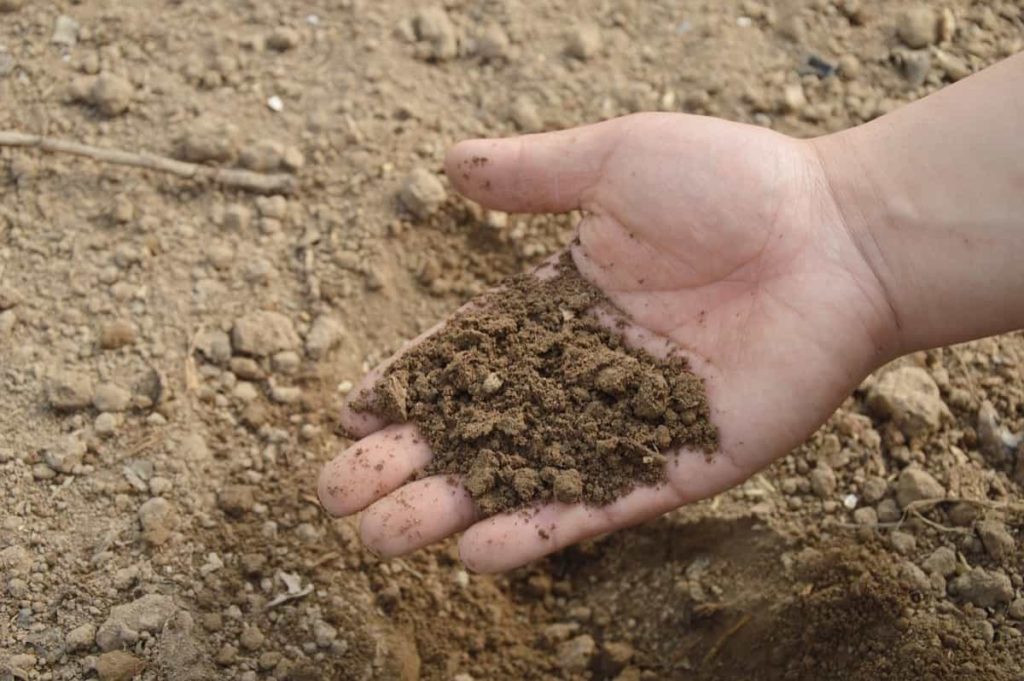
What to do if my soil pH is higher than 7?
The most available state of most plant nutrients is between pH 6.0 and 6.5. Certain nutrients build up to toxic levels in soil with a high pH. Plants become poisonous when large quantities of molybdenum are consumed. Phosphorus will become bound in your soil if your pH exceeds 7. Cottonseed Meal, Peat Moss, soil sulfur, or acid-loving fertilizers can bring down pH if your test results show alkaline soil.
What if my soil is good in calcium or phosphorus?
Calcium is one of the secondary macronutrients for plant growth. However, calcium is not required in the same quantities as Nitrogen, phosphorus, and potassium. It is crucial for plant growth and makes plants less susceptible to pests and diseases. If you have sufficient calcium but not phosphorus in your soil, you might consider guano for phosphorus or oyster shell flour for calcium instead.
What crops benefit from the bone meal?
Phosphorus-rich bone meal is best used for fertilizing flowering plants such as roses, tulips, dahlias, and lilies. As well as roots, bone meal benefits plants such as carrots, onions, radishes, and other bulbs. Plants need phosphorus to grow, but some crops are more difficult to identify as phosphorus-deficient. For example, corn and lettuce generally develop purple stems when not getting enough of this essential nutrient. Other plants may not flower or grow.
How does bone meal work?
Bone meal will increase soil microbes throughout the season, benefitting the soil structure for your plant’s root systems. Calcium for your plants is supplied by bone meal. Calcium improves root growth, encourages strong roots, and helps to control blossom end rot disease. When bone meal is added to soil, it starts to decay. During this decay process, phosphorus will be released. The phosphorus attaches to the soil. After which, the plants absorb it.
What does organic bone meal powder do for plants?
The bone meal powder works with other organic matter to add phosphorus to the soil, which promotes root growth and winter hardiness and often speeds up the maturation process. Slow-release fertilizers like bone meal make it easier for plants to absorb other nutrients. It increases the number of beneficial soil microbes necessary for plant growth when organic bonemeal powder is added to the soil. As a result, healthier and more prolific plants are grown in your garden.
Can you use bone meal during flowering?
Slow-release phosphorus from the bone meal is ideal for sensitive crops. A small bone meal can yield optimum results for flowering and fruiting plants, such as indoor roses; it can also enhance vegetable production. Plants need to have phosphorus to flower. It is easy for plants to absorb phosphorus from bone meal. A bone meal can help your flowering plants grow bigger and more abundant flowers, such as roses and bulbs.
When should you give my plant bone meal?
For established border plants in spring, use bonemeal as a top dressing in autumn and around fruit trees and shrubs before sowing. Root growth continues in milder weather during autumn and winter, so bonemeal is useful for planting hardy woody plants in autumn.
In case you missed it: How to Plant and Care for Hydrangeas: Steps to Grow Hydrangeas for Beginners
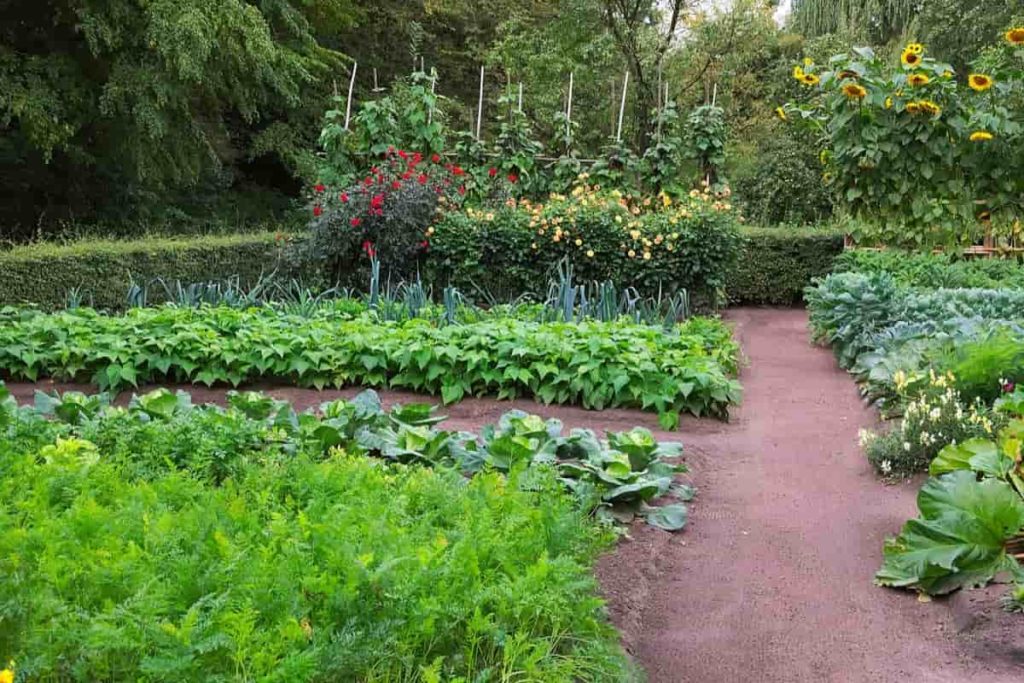
As soon as the soil pH level is balanced, apply a multipurpose fertilizer that contains bone meal close to the plants but not directly on them. You should not apply organic, natural bone meal multiple times throughout the growing season since it takes a long time to work. Applying bone meal fertilizers in the fall is recommended to improve the soil before planting in the spring.
Does bone meal make plants grow faster?
It is not always achievable to obtain all the nutrients your garden needs from soil; animal bones can help fill in the gaps. Magnesium and zinc in bone meal spikes or granules are enough to prevent deficiencies. Leaves that are yellowed, misshapen, or clustered result from zinc deficiencies caused by dry, acidic soil.
Add bone meal to the soil to increase phosphorus levels to get the best results in spring gardening. As part of developing strong roots, this element is released into the soil for up to four months. Growing big, blooming flowers, fruits, and vegetables require a steady supply of nutrients.
Can bone meal burn plants?
Unlike blood meal, a large amount of bone meal will not burn your plants. To help your plants grow and flower, add bone meal to your soil if your soil testing indicates a shortage. A pH test is also important because the bone meal will not be effective if the soil has a pH is seven or higher. The first thing that requires to be addressed is the acidity level. Also, rotted manure can be balanced by mixing bone meal with high nitrogen soil additives.
Which plants like blood meal?
For most garden situations, the all-purpose mix is adequate. Still, we use the Blood Meal as an additional feed for Brassica crops like broccoli, cauliflower, kale, Brussels sprouts, and cabbage as a spring feeding for alliums like garlic and onions and in soils that are depleted of Nitrogen.
- Budget Friendly Sheep Shed Ideas: Cheap and Low-Cost Tips
- How Much Do Cattle Farmers Make: Revenue Streams in Cattle Farming
- Management Pests and Diseases in Your Cotton Field
- Sheep Farming Business Plan for Beginners
- Aquaponic Farming at Home: A Step-By-Step Guide
- Profitable Village Farming Business Ideas in 2024
- High-Yield Aquaculture: Fast-Growing Fish for Farming
- Effective Fish Pond Construction Techniques for Beginners
- Irrigation and Water Management in Pineapple Farming
- Blossom to Harvest: Mastering Flowering and Pollination in Papaya Farming
- Pig Fattening Essentials: From Selection to Sale for Beginners
- Raising Wagyu Cattle: A Complete Guide for Premium Beef Production
- Soil Types and Their Water Holding Capacity
- Optimizing Irrigation Schedules for Coconut Groves for Enhanced Yield
- Espresso Your Garden: Coffee Grounds for Healthier Acid-Loving Plants
- The Best Soil Mix for Snake Plants: How to Mix Your Own Snake Plant Soil
- Green Thumb Success: Expert Tips for Cultivating Greenhouse Beans All Year Round
- Bloom All Year Round: The Ultimate Guide to Indoor Hyacinth Care
- Eco-Friendly Gardening: How to Make Liquid Fertilizer from Kitchen Waste
- Ultimate Guide to Grow Anise in Pots: Explore Seed Propagation to Harvesting
- Guide to Raising Chester White Pigs: Discover Breed Facts to Growth Management
- Mastering the Elegance: The Ultimate Guide to Weeping Cherry Tree Care, Planting, and Maintenance
- Ultimate Guide to Planting Garlic in Grow Bags: Growing Strategies for Beginners
- How to Fix Spider Plant Leaf-Related Problems: Natural and Organic Remedies
- 10 Reasons Why Your Tulsi Plant is Shedding Leaves: Home Remedies and Solutions
- Optimizing Growth and Yield: The Advantages of Palm Bunch Ash Fertilizer
- Utilizing Neem Oil Extract as a Natural Pesticide for Hydrangea
- From Soil to Harvest: Various Ways in Which Farmers Can Use AI Tools
- Steps to Encourage and Induce Citrus Flowers: A Comprehensive Guide
- How to Fix Snake Plant Leaf-Related Issues: Natural and Organic Remedies
- Transform Your Garden into a Fragrant Oasis with Raat Ki Rani (Night Blooming Jasmine)
- Discover the Ideal Chicken Breeds for Philippine Farms
- How to Create a Poultry Egg Farm Business Plan for Profits
- Grow Lemon Cucumbers Like a Pro: Insider Techniques for Bountiful Yields
- Ultimate Guide to Caring for Your Pink Princess Philodendron: Tips for Thriving Variegation
- Areca Nut Profit Per Acre: Calculating Yield and Cost of Cultivation
